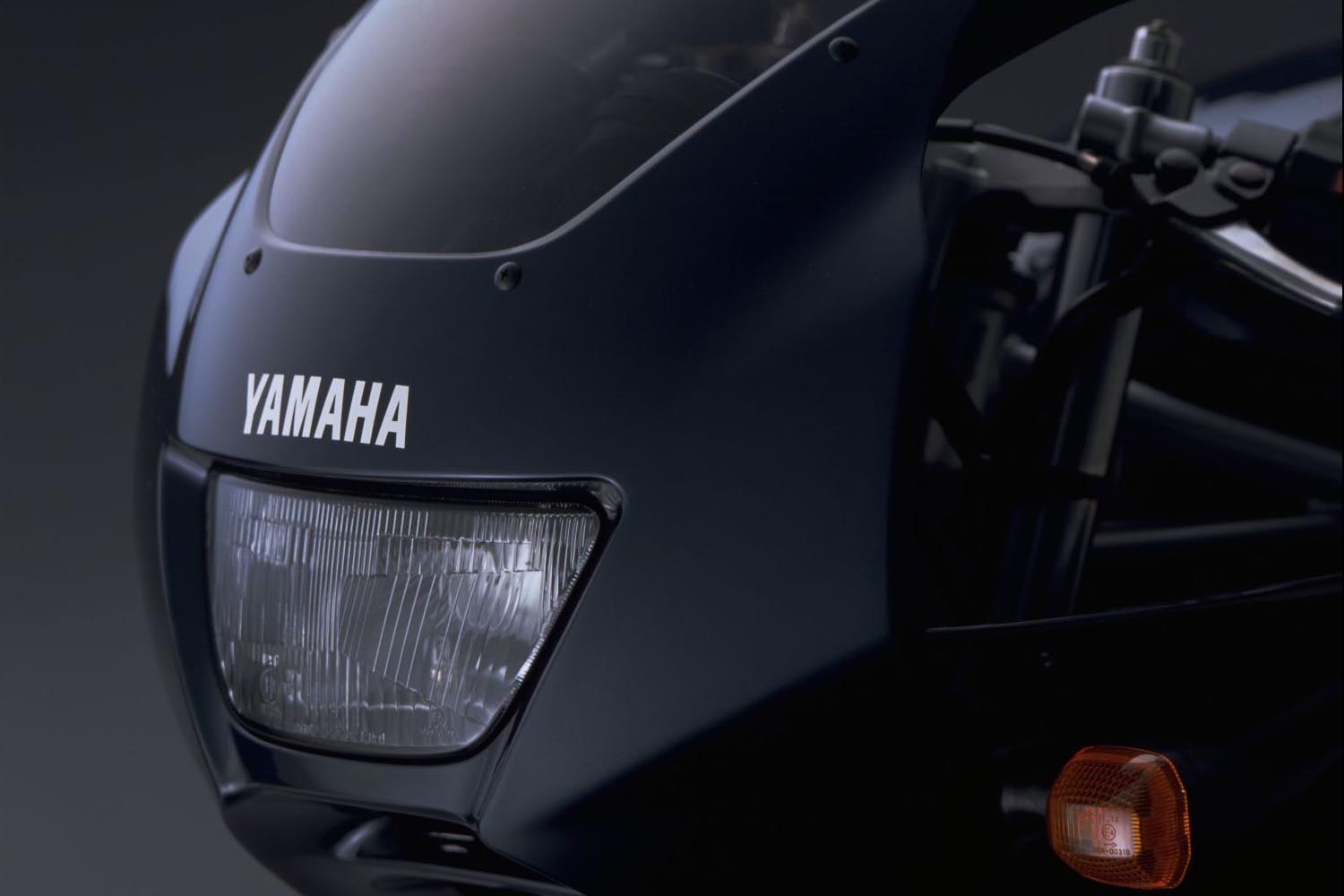Japanese motorbike manufacturer Yamaha has created some real classics over the years. From the tiny FS-1E moped to the awesome VMAX, with sportsbikes like the RD350LC and YZF-R1 in the mix too, they’ve created numerous icons since being formed in 1955.
But these classic machines can come with big price tags and are often impractical as regular rides, so we’ve had a look through the Yamaha back catalogue to seek out some lesser known classic motorcycles from the tuning fork brand, which can be ridden daily and won’t break the bank.
All of these bikes are all over 20 years old, meaning that you can take advantage of classic motorbike insurance policies, and although they may have some miles under their wheels these bikes should prove reliable and easy to live with if well looked after.
SZR660
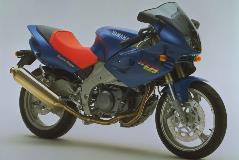
There was a time in the early 1990s when singles were a bit of a thing.
With the exception of dirt bikes, mid-to-large capacity single cylinder engines had largely been consigned to the history books, but an experimental race series called Supermono racing created a mini-revival. The championship saw prototype race chassis wrapped around production based engines. It took place alongside the Superbike World Championship and we even saw a few road bikes emerge, such as the MuZ Skorpion, the Bimota BB1 and this, the Yamaha SZR660.
The SZR was a real parts bin special. It was designed with Europe in mind and was built in Italy by Belgarda, Yamaha’s Italian importer.
The ingredients were all pretty good. The frame came from the TZR125 two-stroke, the engine was lifted from the XTZ660 Tenere and many of the other components had started life in other Yamaha models.
It was the engine that was the main problem. It worked well in the off-road styled Tenere but it wasn’t really designed for a sporting road bike. The wide gear ratios and a dislike of being revved hard meant that it really wasn’t suitable for the job, even if the chassis was up to the task. Singles also never really took off because they vibrate more than multi-cylinder bikes and are generally less powerful. The 47bhp SZR also wasn’t that much cheaper than higher-performing sports bikes, meaning that it really was something of a sales flop?
So why in our collection? It remains an interesting machine, a real rarity and a pretty little bike in many people’s eyes. Despite, or perhaps because of, a lack of popularity prices remain strong – bank on at least £3k for a decent one. Collect or crush? You decide!
YZF750R
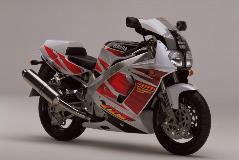
Yamaha’s YZF750R was a fantastic sportsbike, which just happened to come up against the Honda CBR900RR FireBlade at the height of its powers.
Most manufacturers chose 750cc fours for their sportsbikes, as that was the engine capacity used in racing. Introduced in 1993, the YZF replaced not only the aging FZ750 as a road bike, but also the limited edition FZR750R (OW-01) which was the basis for the world superbike racers. Two versions of the YZF were introduced. The SP model was a homologation special for racing and featured, among other changes, flatslide carburettors, a single seat unit and a close ratio gearbox. The YZF750R was the street model and arguably the best 750 of the time.
The problem for Yamaha was that the original FireBlade had come out a year earlier. It had no pretence of being a race bike (Honda had the limited run RC30/RC45) for that purpose, but with 150cc more in its belly, the ‘Blade licked all the competition on the road.
That shouldn’t detract from the YZF, which was a fine bike in its own right and is still modern enough to be a fun experience on road and track today. The SP model enjoyed some success, winning a few world superbike races (most notably with Noriyuki Haga) and four British Superbike titles (James Whitham in 1993 and Niall Mackenzie in 1996, 1997 and 1998).
Unlike many Kawasaki and Suzuki 750s of the same era, few YZFs seemed to be converted into track bikes. That means that there are still quite a few on the market today. Many remain in original condition, although some sport race replica paint jobs in homage to Messrs Haga, Mackenzie and Whitham. Unless you’re a big fan, factory colours are usually best (although some of the early ‘shellsuit’ combinations include pink and purple and are an acquired taste). £3000 should get you a great example, with running projects from less than half of that.
TRX850
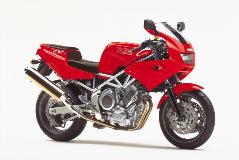
The 1990s saw the start of Ducati’s revival and Yamaha wanted a piece of it.
Originally intended as a Japanese home market model, it was brought over to Europe in 1996 and gained something of a cult following.
The trellis frame and half fairing are pure Ducati 900SS, although the Yamaha didn’t go as far as to make a bespoke V-twin to power the TRX. The 10-valve parallel twin motor came from the TDM but was reworked for its new application. In particular, the TRX motor featured a new crankshaft with a 270-degree firing order, which helped mimic the feeling of a V-twin. With just under 80bhp the TRX had enough go to be fun, without being intimidating, although the suspension and brakes were underwhelming, even by mid-1990s standards.
Today you’re looking at around £3000 for an interesting but often forgotten Yamaha classic that rides like a Ducati.
FJ1200
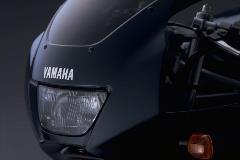
So here’s a bike that’s hard to define by modern terms.
The 1970s was the decade of the UJM – or Universal Japanese Machine. As the name suggested, these bikes were fairly generic, with across the frame air-cooled four cylinder engines and styling which was much of a muchness. The 1980s would mark a period of great innovation and braver design, but the decade also saw Yamaha create what is arguably the finest example of the UJM – the FJ1100.
Launched in 1984, there was seemingly very little special about the FJ’s tech, but that doesn’t mean that it didn’t deliver. The 1097cc, 16 valve engine was strong, making 125bhp, and the addition of the fairing added to the practicality and made it stand out from those ‘70s UJMs.
Yamaha’s biggest problem was Kawasaki’s new GPZ900R Ninja. Like the FJ, the Ninja was a genuine 150mph motorcycle, but its more modern design took sportsbikes to a new level. The FJ was a success though. Despite lacking true sportiness, it competed with reasonable success at the Isle of Man TT races, and it found a place as one of the first ‘sports tourers’ in a new, more segmented marketplace.
The anti-dive front forks and 16” wheels were very much of the time and riding the original FJ1100 feels dated. After two years, the FJ1100 was dropped and replaced by the FJ1200, which as the name suggests, has a more powerful engine, which was bored out to 1188cc. This model stayed in the Yamaha range until the mid-1990s and enjoyed a gentle evolution, including a return to a 17” front wheel.
While the FJ may not be a true icon, that engine is. It went on to power the XJR muscle bike and is rightly revered for its simplicity and reliability.
Today the FJ1200 makes a great starter classic. Practical enough to ride every day and with decent parts availability, they represent the start of the modern bike we know today.
Probably the best thing about the FJ though is the price. They’ve yet to be coveted by collectors, meaning that prices are still down at the banger end of the market. We’ve found decent examples on sale for between £1000 and £1500, making the FJ1100/1200 a heck of a lot of bike for the money.
XV535 Virago
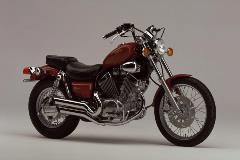
So far, our collection of bikes has focussed on models which tried to create a new audience (SZR660, MT-01) or great bikes which wandered into some game changing competition (YZF750, FJ1100) but the Virago 535 is an unsung bike that got things so right in its pomp that it was a smash hit.
Metric cruisers have always been a hard sell. Regardless of technology, the lure of the Harley-Davidson name has always made the American bikes the market leader in the custom world.
But the Yamaha XV535 Virago, to give it its full title, was one of the defining bikes of the 1990s thanks in no small part to an often overlooked factor – it’s highly competitive price and easy accessibility.
Where the 750cc and 1100cc Viragos went toe-to-toe with the Harleys and failed to make much of an impression, the 535 provided an entry level option, particularly for new riders, and was a sales success.
The engine made an adequate 39bhp but was an authentic V-twin with low maintenance shaft drive. The styling was pure cruiser, but the riding position wasn’t too wild, with only slightly raised handlebars and a riding position that placed the rider’s feet forward, though not in an extreme way.
A low, 700mm, seat height made it super manageable and it found an audience with new riders and those shorter in the leg, who wanted something more than a mere 125 or 250. With a price tag of around £4000 in the mid-1990s, it was priced to sell – and sell it did!
While never as iconic as a Harley, the Virago holds a place in many riders’ hearts as their first big bike. Finding a cheap example is hard these days. They were built to a price, meaning that chrome and finish went south on heavily used examples (as most were). Many were modified or donated their parts to custom bikes, but they were built in big numbers meaning that quite a few later examples (they were built between 1988 and 2004) are still available on the second hand market. Prices range from between £1500-3000, and although they are unlikely to become highly sought after classics, it’s a very usable traditional motorcycle that retains the same charms as it did back in the day.


